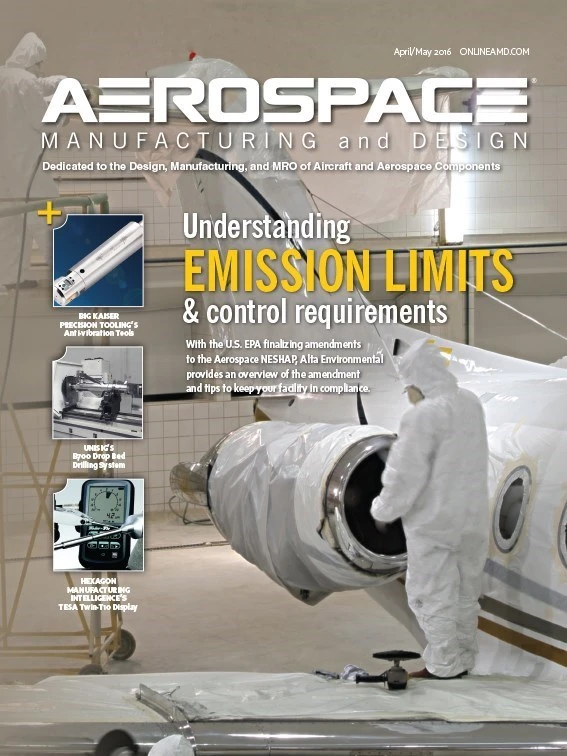
The Federal Aviation Administration (FAA) has released an updated list of pilot, air traffic controller, and citizen reports of possible encounters with unmanned aircraft systems (UAS). The latest report covers Aug. 22, 2015 through Jan. 31, 2016. Reports of unmanned aircraft have increased dramatically since 2014. Safely integrating unmanned aircraft into the national airspace system is one of the FAA’s top priorities.
“We will take action against anyone who operates irresponsibly to the full extent of the law,” says FAA Administrator Michael Huerta.
Unauthorized operators may be subject to fines and criminal charges, including possible jail time. www.faa.gov
Federal government expands UAS partnerships
The Federal Aviation Administration (FAA) and government agencies involved in unmanned aircraft operations are expanding participation in the unmanned aircraft systems (UAS) executive committee (ExCom).
The UAS ExCom includes senior executives from the Department of Defense (DOD), Department of Homeland Security (DHS), National Aeronautics and Space Administration (NASA), and the FAA. Membership is being expanded to include the Departments of Interior, Justice, and Commerce that operate UAS for firefighting and law enforcement and are involved in technology challenges.
The committee helps federal agencies share information and reduce redundancies on UAS research and development, and resolve policy and procedural issues on safe UAS integration into the nation’s airspace. The ExCom was established by the 2009 Duncan Hunter National Defense Authorization Act to focus on DOD’s UAS access into the National Airspace System. It is expected to meet quarterly. www.faa.gov
FAA forecasts sustained small UAS sales growth
The Federal Aviation Administration (FAA) has released its annual “Aerospace Forecast Report Fiscal Years 2016 to 2036” that finds a sustained increase in the use of unmanned aircraft systems (UAS).
The FAA estimates small, hobbyist UAS purchases may grow from 1.9 million in 2016 to as many as 4.3 million by 2020. Sales of commercial UAS are expected to grow from 600,000 in 2016 to 2.7 million by 2020. www.faa.gov
FAA doubles altitude for many UAS flights
After a comprehensive risk analysis, the Federal Aviation Administration (FAA) has raised the unmanned aircraft (UAS) blanket altitude authorization for Section 333 exemption holders and government aircraft operators to 400ft from the previous nationwide certificate of waiver or authorization (COA) for such flights up to 200ft.
The new COA policy allows commercial UAS up to 55 lb to fly up to 400ft anywhere in the country except restricted airspace and other areas, such as major cities where the agency prohibits UAS operations.
“Expanding the authorized airspace for these operations means government and industry can carry out unmanned aircraft missions more quickly and with less red tape,” FAA Administrator Michael Huerta says. www.faa.gov/uas
EEI, Sharper Shape partner to promote safe UAS use
The Edison Electric Institute (EEI) and Sharper Shape, a provider of automated unmanned aircraft systems (UAS)-based asset inspection, have partnered to demonstrate and develop commercial UAS beyond visual line of sight (BVLOS) flights for electric companies.
“Unmanned aircraft systems can help electric power companies improve the reliability, resiliency, and security of the power grid, which ultimately benefits electricity customers,” says EEI Director of Government Relations Chris Hickling.
EEI and Sharper Shape intend to apply with the FAA for approval of demonstration flights with Sharper Shape’s Next Eagle UAS later this year. Currently, inspections of transmission and distribution lines are done via helicopter or manually from the ground. The use of BVLOS UAS flights could enable a safe, efficient, and fast method of inspection.
Sharper Shape Founder Tero Heinonen adds, “Having spearheaded the adoption of commercial BVLOS UAS flights for energy providers in Europe, we are excited to help develop a framework for large-scale and economic BVLOS UAS flights for all electric power companies in the U.S.” www.eei.org; www.sharpershape.com

Lloyd’s Register issues UAS guidance for energy, marine industries
Global engineering, technical, and business services organization Lloyd’s Register has released guidance notes for unmanned aircraft systems (UAS) for the energy and marine industries, noting UAS “can significantly improve productivity gains through reducing risk exposure, survey times, and in-service inspection costs of offshore, marine, and onshore infrastructure.”
“We are developing these guidance notes to provide a consistent approach to risk in UAS and drone deployment, offering practical operational considerations relating to regulations, personnel, quality, safety, hardware, software, and operations,” says Lloyd’s Register’s Chief Technology Officer Nial McCollam.
UAS provide an effective alternative to traditional methods of in-service operational assessment and survey, especially structures and assets at significant heights, difficult to access locations, and hazardous environments. Shell and Maersk Drilling are among early adopters of UAS technology with safety and quality as a priority.
“It only takes one or two accidents or near miss reports to set a bad record for robotics and unmanned systems in the industry, so the guidance notes will help the industry take into consideration important considerations,” says Jan Holm, managing director of Maersk Drilling Singapore.
The Lloyd’s Register guidance notes will be updated regularly to provide industry with the latest practical information on issues such as how best to use UAS for inspection in confined spaces.
“Rapid advancements in hardware and software including air stabilization, pre-flight planning tools, obstacle detection, and avoidance technology have transformed these small aircraft into viable business tools,” says Chris Chung, Lloyd’s Register’s head of strategic research. www.lr.org

NASA Global Hawk part of El Niño research flights
The National Oceanic and Atmospheric Administration used NASA’s Global Hawk unmanned aircraft system (UAS) carrying a suite of meteorological sensors and deploying dropsondes during three, 24-hour research flights in February. The high-altitude, long-endurance (HALE) UAS from Armstrong Flight Research Center, Edwards Air Force Base, California, flew missions over the Pacific Ocean south of Hawaii where El Niño-driven weather systems are spawned to measure air flow at the top of massive, tropical thunderstorms. The Global Hawk provided precipitation and wind profiles from the NASA Goddard High-altitude Imaging Wind and Rain Atmospheric Profiler radar system. www.noaa.gov
State DOTs using UAS to improve safety
According to a March 2016 survey by the American Association of State Highway and Transportation Officials (AASHTO), 33 state Departments of Transportation (DOTs) have or are exploring, researching, testing, or using unmanned aerial vehicles (UAVs) to inspect bridges and assist with clearing vehicle crashes, reduce traffic congestion, and cut costs.
The Michigan State Department of Transportation (MDOT) is set to begin a two-year UAV study – phase two of an 18-month UAV study completed by MDOT and the Michigan Tech Research Institute in 2014.
MDOT Engineer of Operations and Maintenance Steven J. Cook says UAVs are a safe, reliable, and cost-effective way to monitor traffic flows, obtain photos from inside confined spaces, and gather data on bridge conditions while keeping workers out of harm’s way.
“A traditional bridge inspection typically involves setting up work zones, detouring traffic, and using heavy equipment,” Cook says. “The UAVs can get in and get out quickly, capturing data in near real-time and causing less distraction and inconvenience to drivers.”
MDOT estimates that a standard bridge deck inspection takes eight hours, a crew of four people and heavy equipment; costing at an estimated $4,600. The same inspection with a drone takes two people two hours at an estimated cost of $250.
The Minnesota Department of Transportation is also looking at UAVs for bridge inspections, surveying, and aerial photography.
In 2015, the University of Vermont, working in conjunction with the Vermont Agency of Transportation, used a USDOT grant to study the use of UAVs to monitor rivers to prevent flooding and damage to roadways. www.transportation.org
Get curated news on YOUR industry.
Enter your email to receive our newsletters.
Explore the April May 2016 Issue
Check out more from this issue and find your next story to read.
Latest from Aerospace Manufacturing and Design
- Ralliant to establish global headquarters in North Carolina
- Philatron MIL-DTL-3432 military cables
- Beyond Aero refines its hydrogen-electric light jet
- Americase's advanced protective solutions
- Social media - what are your thoughts
- GE Aerospace secures Air Force engine contract
- Thomson Industries' online sizing and selection tool
- #53 - Manufacturing Matters - 2024 Leaders in Manufacturing Roundtable






